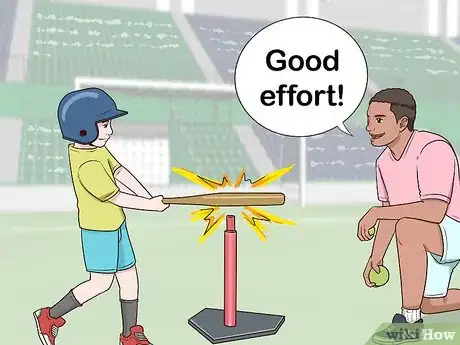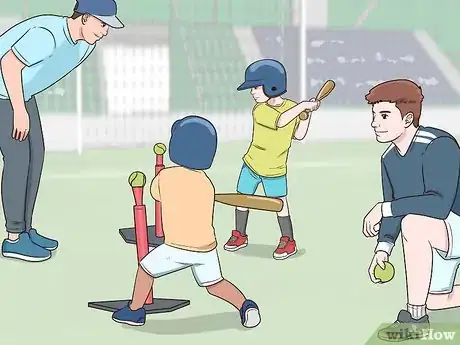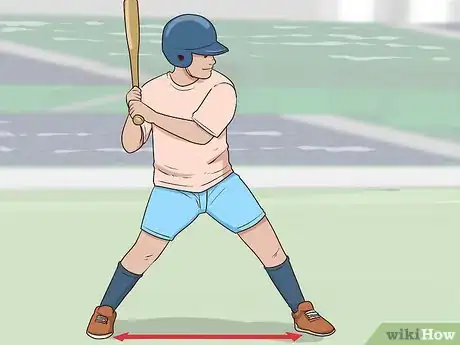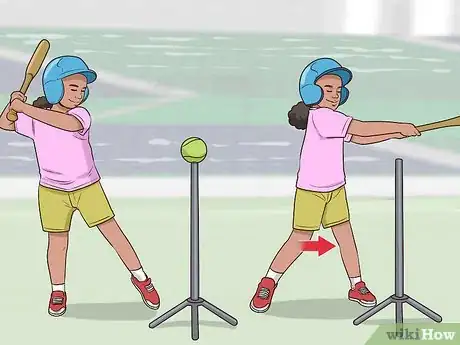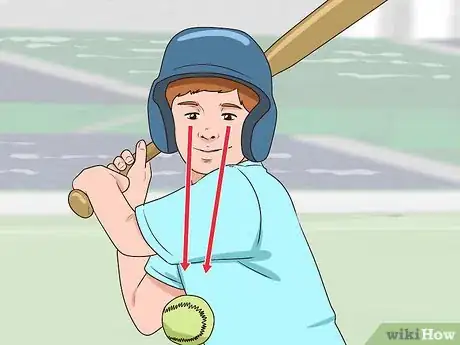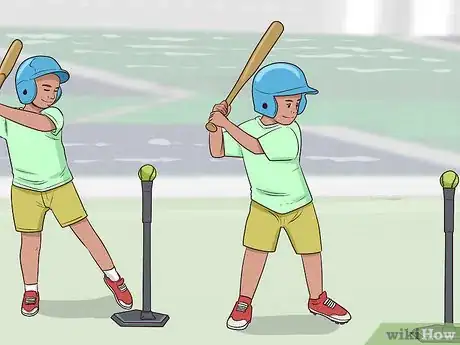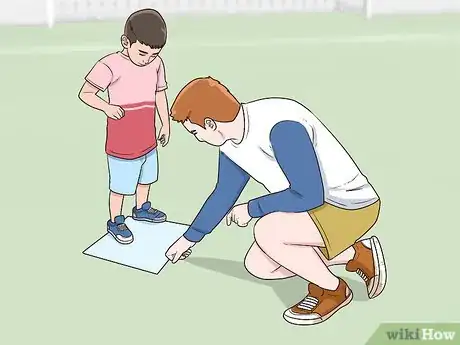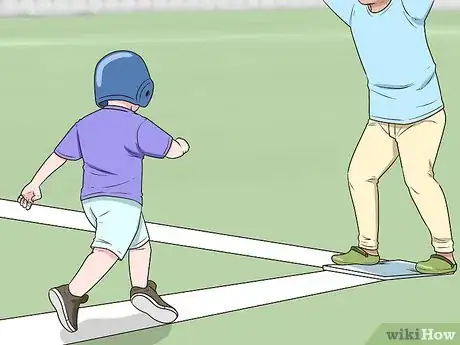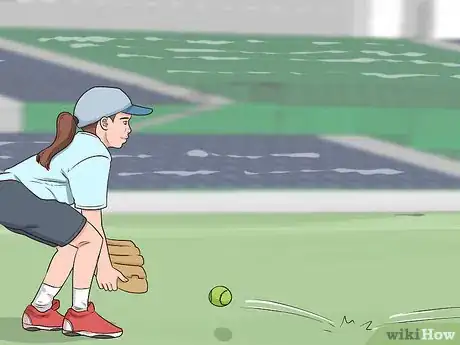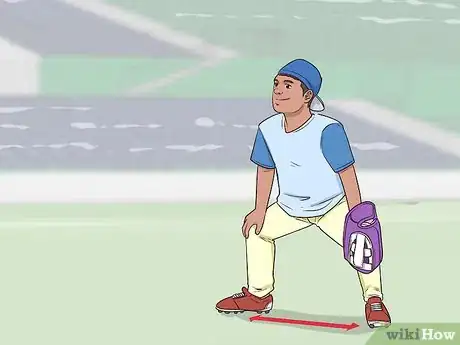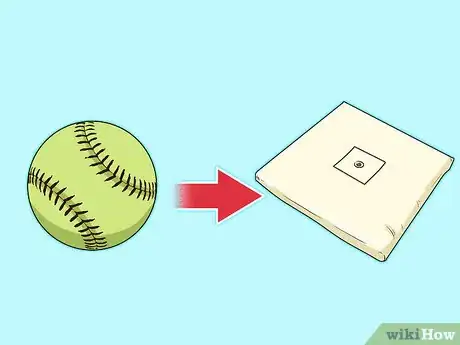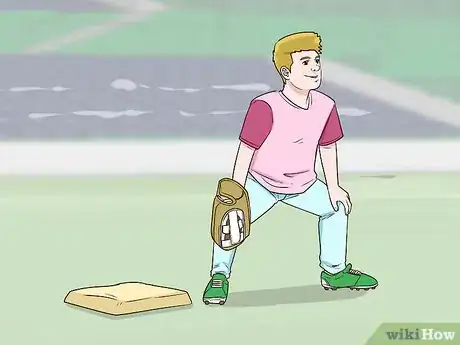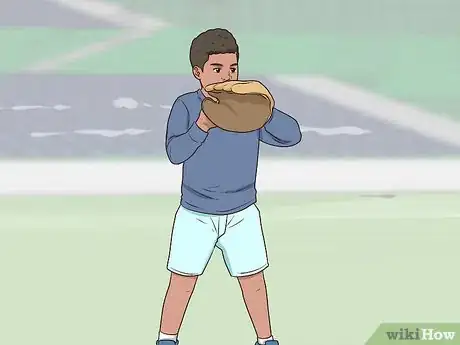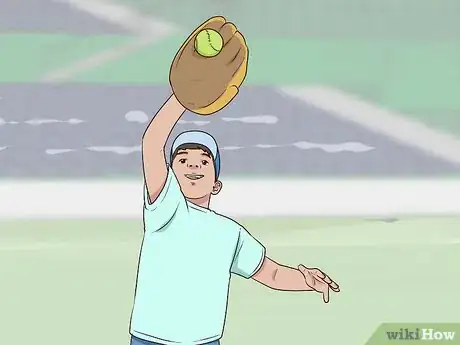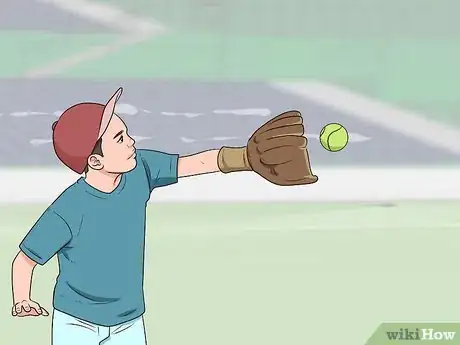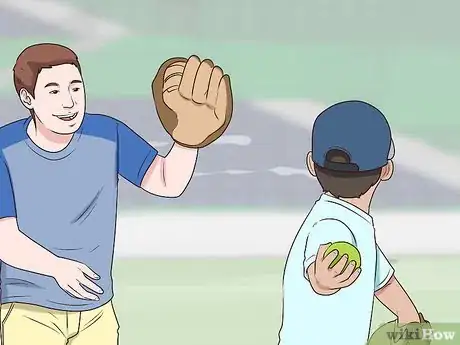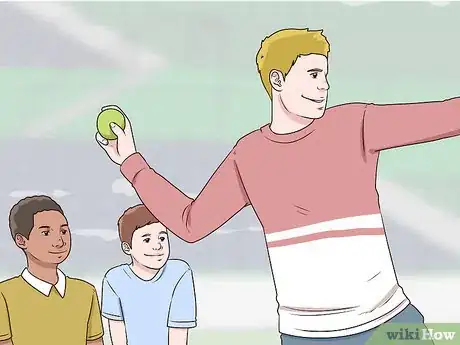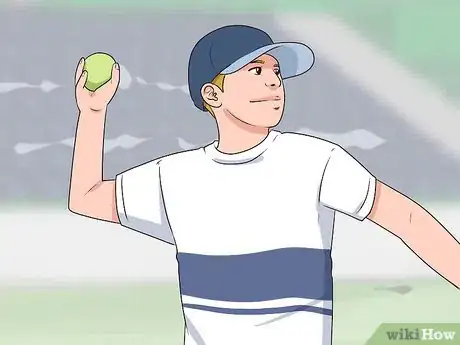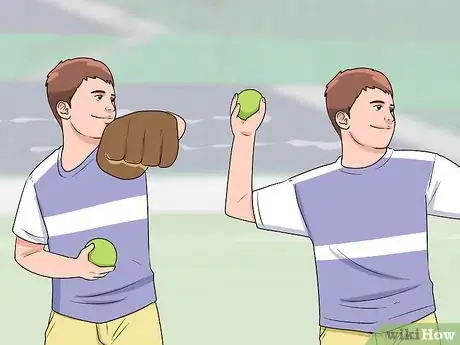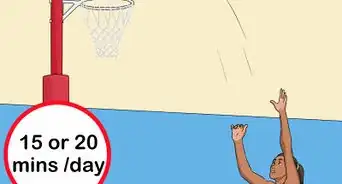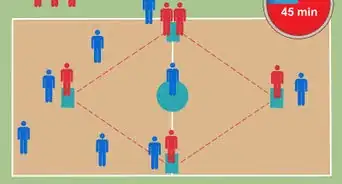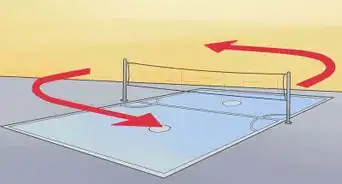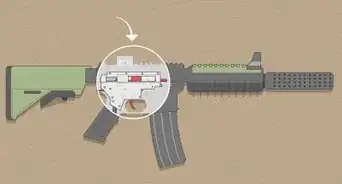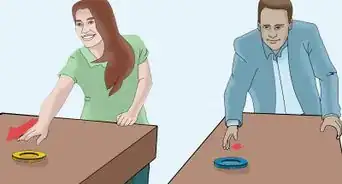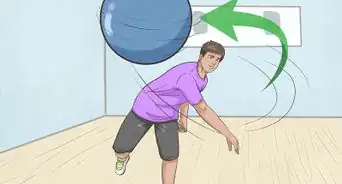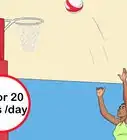This article was co-authored by Isaac Hess. Isaac Hess is a Baseball Coach, Instructor, and the Founder of MADE Baseball Development and Champion Mindset Training Program, a baseball training program based in Los Angeles, California. Isaac has over 14 years of experience coaching baseball and specializes in private lessons and tournaments. He has played baseball for both professional and collegiate leagues including Washington State University and the University of Arizona. Isaac was ranked as one of Baseball America's top 10 prospects for 2007 and 2008. He earned a BS in Regional Development from the University of Arizona in 2007.
This article has been viewed 24,011 times.
T-ball is an opportunity to expose children to the joys of baseball while teaching them the fundamentals. As a teacher, your focus is on making children better players rather than winning. To do this, divide practices into plenty of short, simple, but fun activities. While teaching running, batting, fielding, and catching, praise kids for what they do right instead of criticizing their mistakes. Don't forget to treat the team to a round of ice cream after the game!
Steps
Planning Effective Practices
-
1Divide your practices between drills and games. Try to come up with a practice structure that includes both practice drills and scrimmage games. For instance, devote five minutes for warming up and 25 minutes for drills such as batting and fielding practice. After a five minute break, have the kids play a scrimmage game.[1]
- Getting to play an actual game of T-ball is one of the rewards kids look forward to after working hard in practice.
-
2Keep drill and technique explanations brief. Younger kids will tune out your lengthy lecture on how to catch a ball. Hone your instructions down to key points, such as “Move your feet” or “Hold your glove out.” It's better to show them what to do, then let them try it for a few minutes. Be patient and ready to repeat anything you say many times throughout the season.[2]
- Show them by giving them a step-by-step demonstration. For example, when swinging a bat, you can show them how far to spread their legs apart and then to pivot their back foot to swing.
Advertisement -
3Praise kids for what they do right. Even professional players make mistakes. These are kids new to the sport, so plenty of things will go wrong. Instead of focusing on the mistake, compliment them on what they did right. They'll remember to do that again while you offer advice on how to improve.[3]
- For example, say “Good effort! Now twist your back foot forward as you swing the bat.”
- Yelling and criticizing is a sure way to cause kids to hate T-ball. Even if your first baseman gets distracted by a bug, stay calm and kind.
-
4Have other adults help with multiple kids. Some coaches make the mistake of trying to teach a whole team of kids at the same time. In T-ball, you need other adults to give out more individualized instructions. Try getting other parents involved. They can help out as drill partners, such as by playing catch with kids.[4]
-
5Plan fun activities during and after T-ball. T-ball is a game, so keep it lighthearted. Between normal drills, include some fun ones such as throwing contests, hitting contests, races around the bases, freeze tag where the bases are safe zones, or a game of pickle. Set up these activities as five or ten-minute refreshers between drills. Offer enticements, such as ice cream after practice.[5]
- For pickle, you stand on one base while another adult stands on a different base. The kids stand between you while you try to tag them out.
- Remember that the sport isn't life to your players. They're more interested in the opportunity to run around and play with friends.
Teaching Batting and Running Techniques
-
1Display the proper batting stance. Step into the batter's box and go over the proper technique before letting children replicate it. Their feet should be a shoulder width apart, pointed towards home plate. Have them bend their knees a little as they hold the bat behind them with a relaxed grip.[6]
- Have them pretend to swing an invisible bat first. You can have them practice with a plastic bat at home, but T-ball players use aluminum bats.
-
2Teach them to shift their knees forward when swinging. Tell the kids, “Your legs swing the bat.” To illustrate this, tell them their knees are springs. When swinging, their knees should turn back a little before swinging forward with the bat. Remind them to “turn back, then turn forward fast” as they take a few practice swings without the tee in place.[7]
- You can tell kids to pivot their back foot like they're squishing a bug. The pivot ensures those knees shift forward to generate a smooth but powerful swing.
-
3Remind them to keep their eye on the ball. You've heard this phrase before, and it's true. They should focus on the ball as they swing. To do this, they'll need to keep their head in place, centered over their body. It should stay this way as their hands bring the bat all the way through the tee.[8]
- Let them know that after they hit the ball, they should shift their attention from the ball to the base. This is the only time they don't have to keep their eye on the ball.
-
4Practice with hitting contests. Hitting contests are easy to set up and serve as fun ways to practice hitting techniques. Place a series of cones all the way to the outfield, then let everyone take turns hitting off the tee. You can give out points depending on how far the kids hit the ball.[9]
-
5Show them that a base means the runner is safe. Tag is a game that every child knows, and it translates well to baseball. Roll a ball so it's in play, then let a kid run to first base. Make sure they stay on the line. Pick up the ball and try to tag them. Tell them, “if you get to the base, you're safe.”[10]
-
6Have them run through first base. To encourage this, you can have an adult stand behind first base with a pack of stickers. When one of the kids runs through first base, give them a sticker. Explain that first base and home plate are the only places where they don't stop running.[11]
- You'll have to change your approach for fielders. Teach kids to stomp on the base when not batting so they slow down rather than collide with a runner.
Explaining How to Field Balls
-
1
-
2Roll balls to practice fielding. Avoid using a bat since hitting consistently is a challenge. Roll the balls slowly to the kids at first so they become more comfortable with fielding. Encourage them to place the tip of the gloves in the dirt while watching the ball. Their eyes should stay on the ball until it's in the glove.
-
3Remind them to move their feet when fielding. Most balls won't come directly at players, so you'll often have to repeat the phrase “move your feet.” Roll a few balls to their sides. When fielded correctly, the kids will shuffle over and stand in front of the balls before fielding them. Make sure their feet stay wide, a shoulder width apart!
-
4Teach them to transition to a throw smoothly. Fielding is all about the footwork. To show this, remind them of the “fast-slow-fast” order. First, go fast when running to field the ball. Then, slow down to field the ball. Finish with a fast foot shuffle before making the throw.[13]
-
5Explain that they need to leave the base to chase balls. At first, children will hesitate to leave the base to chase loose balls. Ask them who the base belongs to. For instance, they'll say that first base belongs to the first baseman. Inform them that the base belongs to the runner and that they'll have to leave it sometimes to play the tag game.[14]
- Stand on the base and ask them, “I'm the baseman. If I stand here, am I safe?” If you ask them again who the base belongs to, they'll realize the base is for the runner.
-
6Focus on the need to retrieve the ball first. Reiterate to the kids, “Ball first, base second.” They'll want to tag out the runner, but they can't win at tag unless they have the ball. In addition, many throws will sail wide of the intended target. Encourage kids to leave the base and get into position to make the catch.
- If they continue to look at the runner, ask them “Can you catch the ball when looking at the runner?”
-
7Position them next to the base when fielding. Kids should never stand on top of the base. For their own safety, instruct them to stand between the base and the ball. Toss the ball to them and let them practice fielding it. They should stretch out only when the ball reaches them, keeping their foot next to the base until they need to touch it.
- Before the ball is hit, they can stand further away from the bases, but they should still stay aware of what's going on around them.
Showing How to Catch the Ball
-
1Practice catches with tennis balls. Baseballs are hard and they hurt. All it takes is getting hit with one once for a kid to feel afraid. Once this happens, you'll lose them as a player. Let them get accustomed to using a mitt first. By the time you upgrade to harder balls, the kids will have developed some confidence and arm strength.[15]
-
2Show them the stance for catching the ball. Catching a ball is one of the biggest challenges for kids in T-ball. Using the correct stance makes this more possible as they develop. Keep their feet wider than their shoulders and their hands away from their body. Have them hold the mitts off to the side with their wrists facing their bodies.[16]
- One exercise kids can do is a frog jump. Have them leap forward and land in the catching position you showed them. For fun, ribbit as loudly as possible.
-
3Ensure all catches are made to the player's side. Most children will do this naturally, but if you notice anyone keeping the glove near their body, stop them. In T-ball, there will be a lot of missed catches. The last thing anyone wants to see is a hard ball crashing into someone's face or chest.
-
4Extend the glove to make the catch. The glove should start out beside the child's body. When the ball arrives, they can then push it forward to catch the ball. This lets them see their hand position and the ball at the same time. At first, kids will have a difficult time doing this, but encourage them as often as possible. It's for their own safety.
- Most kids won't have the strength yet to do this comfortably, so it'll take them a while to learn. Be patient.
-
5Play a game of catch. Any parent can help their child learn how to catch. Lob the ball to them and watch their technique. Adults are the best partners for this exercise since they aren't as likely to make errant throws. If you're teaching a team of kids, you can let the kids throw to one another. Start with low throws and move onto pop-ups when you feel like the kids are ready.[17]
- If you let kids throw to one another, assign an adult to chase down loose balls. Give the kids a few extra balls so they don't have to wait.
Teaching Throwing Techniques
-
1Get them to point their shoulder towards the target. Have every kid line up in front of you. Each child should plant their throwing foot behind them. Then, they should turn their bodies so the opposite shoulder points directly at the target. Give them a demonstration before letting them throw.[18]
- Anything makes a good throw recipient, including baskets, cones, or other adults.
-
2Instruct kids to lift their throwing elbow. Their arms need to raise up to shoulder-height. Next, have them bring their throwing arms behind their heads. Tell them “your elbow points at your target like a big arrow.”[19]
-
3Have them shuffle forward before throwing the ball. Have the kids step forward twice before making the throw. Remind them again and again to “move their feet.” Step forward with the front foot, then follow it with the back foot. Repeat it a second time. After this, the back foot stays planted firmly under the throwing arm.
- Tell the kids that “You don't throw the ball with your arm.” Although it isn't completely true, it shows them that legs are important for strong, accurate throws.
-
4Snap the arm forward to throw the ball. To throw the ball, the elbow of the glove arm pulls back while the throwing arm snaps forward. Watch the kids as they release the ball. Make sure their throwing hand is above their elbow. If they don't do this, they'll throw sideways.[20]
- As you teach them this technique, use the phrase “shuffle, shuffle, pull, snap.” It helps them put the foot and arm movements together.
-
5Stop kids from arcing the ball when throwing. At first, some kids throw the ball high in the air. Correct this before it becomes a habit. Gently remind them that fast throws stay level with the ground. Go back and practice the mechanics of a good throw to encourage them not to arc the ball.[21]
- One exercise for this is to have kids throw bouncing balls to a catch partner. It's also a great opportunity to practice fielding.
-
6Practice throwing at a target. Inventing a game is a great way to let the kids have fun while practicing their throwing technique. Set a bucket or laundry basket on the ground. From a distance, have the kids take turns trying to bounce balls into the basket. Assign points, such as five points for hitting the side of the basket and ten for hitting the center.[22]
Expert Q&A
-
QuestionWhat does it take to be a great coach?
 Isaac HessIsaac Hess is a Baseball Coach, Instructor, and the Founder of MADE Baseball Development and Champion Mindset Training Program, a baseball training program based in Los Angeles, California. Isaac has over 14 years of experience coaching baseball and specializes in private lessons and tournaments. He has played baseball for both professional and collegiate leagues including Washington State University and the University of Arizona. Isaac was ranked as one of Baseball America's top 10 prospects for 2007 and 2008. He earned a BS in Regional Development from the University of Arizona in 2007.
Isaac HessIsaac Hess is a Baseball Coach, Instructor, and the Founder of MADE Baseball Development and Champion Mindset Training Program, a baseball training program based in Los Angeles, California. Isaac has over 14 years of experience coaching baseball and specializes in private lessons and tournaments. He has played baseball for both professional and collegiate leagues including Washington State University and the University of Arizona. Isaac was ranked as one of Baseball America's top 10 prospects for 2007 and 2008. He earned a BS in Regional Development from the University of Arizona in 2007.
Baseball Coach & Instructor Be positive, and use positive feedback to motivate your players. Create a team atmosphere and motivate your team to be there for one another. It's also important to figure out when you need to step in to teach your players, and when you need to stay out of the way and let them learn for themselves. It also doesn't hurt to know the game well!
Be positive, and use positive feedback to motivate your players. Create a team atmosphere and motivate your team to be there for one another. It's also important to figure out when you need to step in to teach your players, and when you need to stay out of the way and let them learn for themselves. It also doesn't hurt to know the game well!
Things You'll Need
- Tennis balls
- Glove
- Bases
- Bats
References
- ↑ http://www.baseballpositive.com/tee-ball/
- ↑ http://truckeelittleleague.com/Assets/190/TBall-Practice-Plans-and-Drills.pdf
- ↑ Isaac Hess. Baseball Coach & Instructor. Expert Interview. 20 March 2020.
- ↑ http://www.huntsvillepatriotleague.org/Docs/HPL%20T-ball%20Intro.pdf
- ↑ http://www.teamsideline.com/Assets/450/12thingsaboutcoachingtball.pdf
- ↑ Isaac Hess. Baseball Coach & Instructor. Expert Interview. 20 March 2020.
- ↑ http://www.baseballpositive.com/tee-ball/
- ↑ https://patch.com/california/healdsburg/ease-anxiety-and-teach-kids-to-catch-with-bare-hands-92decf9ee0
- ↑ http://truckeelittleleague.com/Assets/190/TBall-Practice-Plans-and-Drills.pdf
- ↑ http://www.baseballpositive.com/tee-ball/
- ↑ http://www.huntsvillepatriotleague.org/Docs/HPL%20T-ball%20Intro.pdf
- ↑ http://truckeelittleleague.com/Assets/190/TBall-Practice-Plans-and-Drills.pdf
- ↑ http://www.baseballpositive.com/tee-ball/
- ↑ http://www.baseballpositive.com/tee-ball/
- ↑ https://patch.com/california/healdsburg/ease-anxiety-and-teach-kids-to-catch-with-bare-hands-92decf9ee0
- ↑ http://www.baseballpositive.com/tee-ball/
- ↑ Isaac Hess. Baseball Coach & Instructor. Expert Interview. 20 March 2020.
- ↑ http://www.baseballpositive.com/tee-ball/
- ↑ http://truckeelittleleague.com/Assets/190/TBall-Practice-Plans-and-Drills.pdf
- ↑ http://www.huntsvillepatriotleague.org/Docs/HPL%20T-ball%20Intro.pdf
- ↑ http://www.baseballpositive.com/tee-ball/
- ↑ Isaac Hess. Baseball Coach & Instructor. Expert Interview. 20 March 2020.


